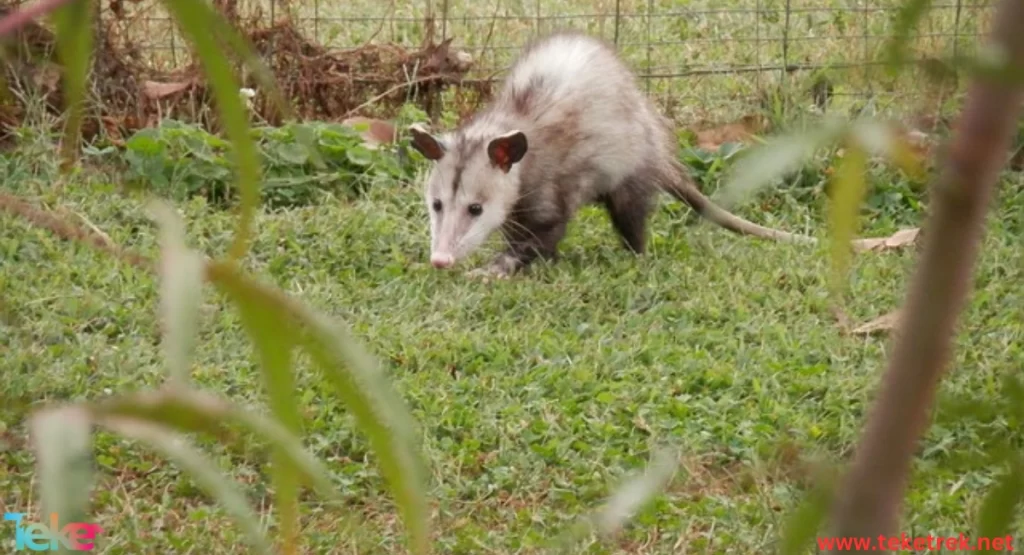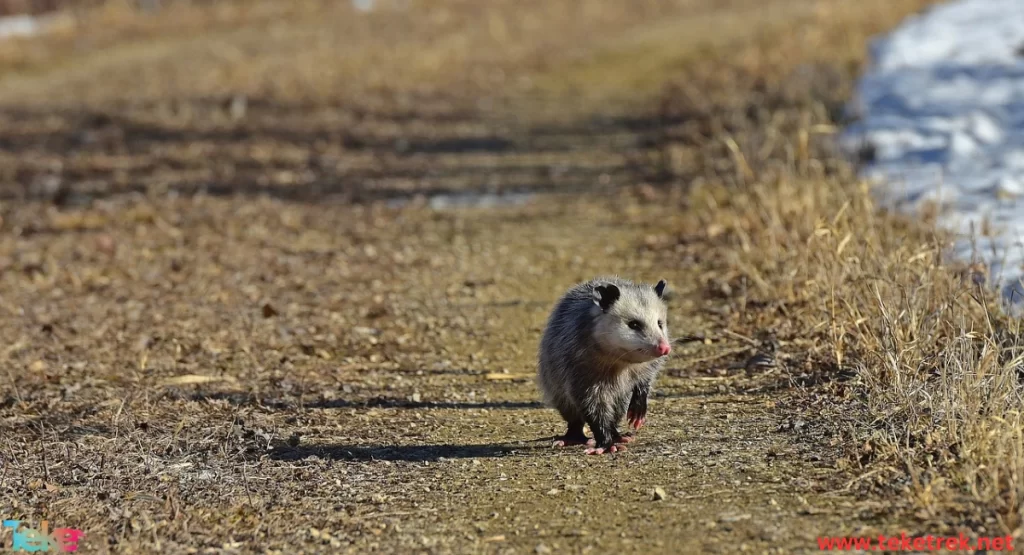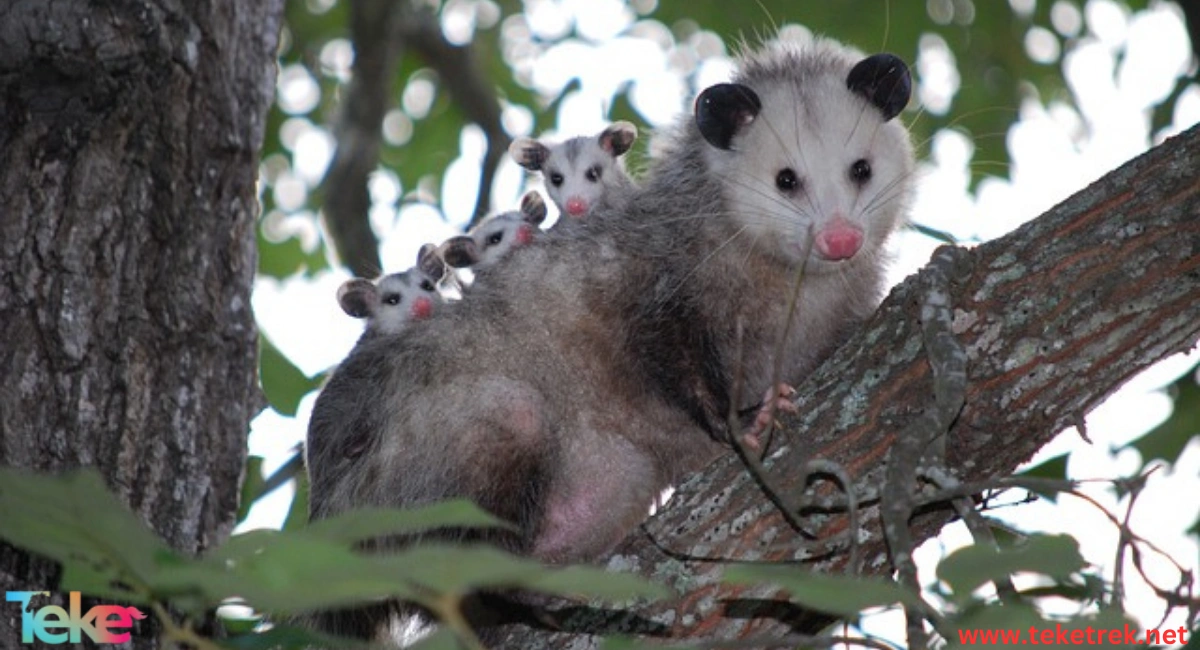The little opossum that lives in America. Let’s talk more about it and how it lives, reproduces, and feeds.
In this Article about Opossum in TekeTrek Website, we will introduce you to the most important information related to this object. Follow along with us.

About opossums
What is opossum? The opossum, an animal of the marsupial order with 126 species in 18 genera, is considered a “living fossil” and is therefore used to approximate its rich ancestral state in comparative studies.
- The oldest of them dates back to the early Miocene, the latest of which dates back to the Oligocene-Miocene boundary.
- The gray has a short-tailed skeleton, a small to medium-sized didelphimorph reaching the size of a cat, with small incisors, large canines, and tricuspid molars.
- Whereas Didelphimorphs have flat feet and hind feet with opposable toes without claws.
Food for opossums
What is food of opossum? Opossums are opportunistic carnivores, but species differ from each other in the amount of meat and plants they include in their diet.
- They eat insects, rodents, birds, eggs, frogs, plants, fruits, grains, and some of them the skeletal remains of road-killed rodents and animals to meet their calcium needs.
- Members of Caluromyinae feed mainly on other animals.
- The water opossum or yabok (Chironectes minimus) also uses its webbed hind limbs to dive for freshwater molluscs and crayfish.
- While the domestic one feeds on dog and cat food and human food waste.
Opossum habitats
The opossum originated in the Amazon region of South America and then entered North America after the American crossing in the late Miocene, but the Virginia opossum species is only found in the United States and Canada. While other species live in southern countries of the United States, the Virginia opossum is found in wooded areas such as forests, shrublands, mangrove swamps, rainforests, and eucalyptus forests.
Reproduction in opossums
The opossum is a reproductive animal. The female has a reproductive system that includes a bifurcated vagina and a divided uterus. The average estrous cycle is about 28 days. It also has a short-lived, simple-structured placenta. The young are born at a very early stage, the gestation period ranges between 12 to 14 days, then it gives birth to about 20 young, and the young are weaned between 70 and 125 days.
Opossum behavior
Opossums live solitarily in one area, provided that food and water are available. Some families gather in prepared burrows, where they temporarily occupy abandoned burrows, and then dig their own burrows.
- Opossums are nocturnal animals that prefer dark, safe areas, which may be underground or above ground.
- Juvenile Virginia opossums hiss defensively when threatened or harmed, imitating the look and smell of a sick or dead animal.
- But in young children, the brain does not react in this way at the right moment and they fail to “play dead” when threatened.
- He pulls his lips back, teeth are exposed, saliva foams, eyes close, and a foul-smelling fluid is secreted from the anal glands.
- The stiff and coiled form is prodded, or turned, and the animal regains consciousness after a few minutes to four hours, with the ears twitching slightly.
- Opossums climb trees, use their sharp claws to dig into the bark, and use their long prehensile tail as an extra limb.


Opossums and hunting
The Virginian was heavily hunted in the United States, with opossum farms being operated in the United States.
- In Dominica, Grenada, Trinidad, Saint Lucia, Saint Vincent and the Grenadines, it is very popular and can only be caught during specific times due to overfishing.
- In northern and central Mexico, known as tlacuache or tlacuatzin, their tails are eaten to improve fertility.
- In the Yucatán Peninsula it is not considered part of the Maya diet, but is eaten in cases of hunger.
- Opossum oil is high in essential fatty acids and has been used as a carrier for arthritis treatments or ointments.
In short, the opossum is a carnivorous mammal marsupial, most species inhabit America and some Canada.






